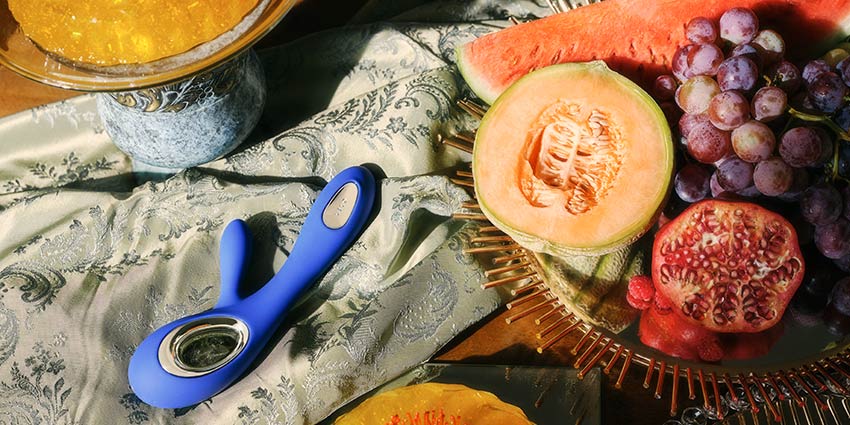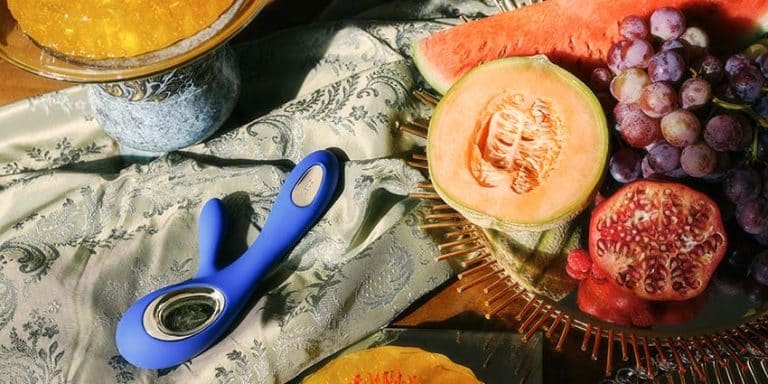If a spade is a spade, let’s just call it a spade? By that I mean, the majority of you reading this article right now probably are or have been sexually active. At the very least, it’s safe to assume that you’ve experimented with masturbation (or are ready to).

And because we’re sexual beings, we turn to erotic content, aka porn, to teach us about the sexier side of the birds and the bees.
Sure, you may have had sex education in school, but did you know that sex education actually has a near-zero impact when it comes to a teen’s sexual behaviour? Not to mention that schools that teach abstinence actually have higher rates of teen pregnancy? I digress (but isn’t that crazy?).
Coming back to porn and erotic content… while many of us do agree that viewing it is arousing, it’s also true that it can give us a warped view of what sex and intimacy actually look like.
You see, when we’re watching or reading this kind of content, we see words like ‘pussy’ being thrown around as a means to name the female genitalia. And so, we think that’s the sexy way to talk about a woman’s sweet spot, not really knowing that this beautiful part of the female anatomy is so much more than that.
Never mind the fact that a vagina isn’t the entirety of what you see. It’s simply one part of the entire female sexual anatomy.
In fact, the female sexual anatomy consists of the:
- Vulva
- Clitoris
- Labia Majora
- Labia Minora
- Vagina
- Mons Pubis
- Cervix
- G-Spot (Grafenberg Spot)
- Urethra
- Hymen
- Pelvic Floor
- Bartholin’s Glands
So today we’re going to enjoy a little lesson on female sexual anatomy.
What is the Vagina?
The vagina is an elastic, muscular canal that’s around three inches long with a soft, flexible lining that produces natural lubrication and sensation.
It’s the part of the female anatomy that connects the uterus to the outside, and thus it starts at the vaginal opening and ends inside the body, at the cervix (the lower part of the uterus).
The vagina is the part of the female anatomy that can expand and contract, and accommodates the penis (as well as fingers, tampons, menstrual cups, and internal sex toys) during penetration.
It’s also the part of the body that expands in order to allow for childbirth, and is the opening through which professionals can check the health of one’s cervix. The vagina too is where blood exits the body during menstruation.
Then there’s the hymen, which is a thin, fleshy tissue that can be found at the opening of the vagina. For many, a woman who still has her hymen intact is considered a virgin.
Today, however, the world is rethinking the notion of virginity as a social construct, and that when penetration takes place for the first time, nothing is actually lost. Thus, ‘breaking’ one’s hymen need not change one’s identity or level of self-worth.
But, as we mentioned, this is only one part of the female sexual anatomy.
Female Sexual Anatomy: The Urethral Opening
Contrary to what many believe, there are actually two openings in the vulva. One is the vaginal opening and the other is the opening to the urethra.
The urethral opening is a tiny hole located just below your clitoris, and is the hole from which pee comes out of. The vaginal opening, as we mentioned, is where menstrual blood and babies exit, and is where things are inserted for penetration.
Female Sexual Anatomy: The Cervix
The cervix connects the uterus to the vagina. There’s a small hole in the cervix which allows blood and sperm to pass though, and it is the cervix that dilates during childbirth.
When a woman is aroused, her vagina will expand, allowing the cervix to lift upward, which will then elongate the vagina (otherwise known as ‘tenting’).
Natural lubrication is also created when a woman is aroused, and this is with the help of the Bartholin’s glands that sit on either side of the vaginal opening.
Female Sexual Anatomy: The G-Spot
The G-spot is a hot spot for women because, when stimulated, it can induce all kinds of delicious orgasms. This spot can be found a few inches inside of the vagina, more so at the front (towards your belly).
When a woman is aroused, their G-spot will swell, making it easier to find and easier to stimulate. Today, there are various sex toys that specifically target the G-spot, allowing women to experience new waves of climatic bliss.
Female Sexual Anatomy: The Vulva
Often what people think is the vagina, is actually the vulva. The vulva includes the labia minora (aka the inner lips) and the labia majora (aka the outer lips) and can be found on the outside of the body. The vulva protects the vaginal opening.
Then there’s the mons pubis, which is found on the anterior portion of the vulva. It’s fatty tissue that forms beneath the skin, protecting the junction where the pubic bones meet.
Female Sexual Anatomy: The Clitoris
The clitoris is arguably the most erotic erogenous zone when it comes to the female anatomy, as it only serves one purpose: pleasure!
Indeed, the clitoris is extremely sensitive, loaded with nerve endings, making it a zone for uninhibited sexual euphoria.
And interestingly, did you know that the clitoris is not just the pea-sized structure found on the outside, at the top of a woman’s vulva? In actuality, the clitoris is a root-shaped structure, and extends inside of the body.
Side note: the SONA 2 and the SONA 2 Cruise are clitoral pleasure products that can stimulate both the internal and external parts of the clitoris for even bigger orgasms.
Then there’s the clitoral hood, which is a small flap of skin at the point where the inner lips meet. The function of the clitoral hood is to protect the clitoris because it’s so sensitive.
Female Sexual Anatomy: The Pelvic Floor
The pelvic floor is a group of muscles that can stretch from the pubic bone at the front to the coccyx (your tailbone), and the ischial tuberosity (your sitting bone) to the other side. A female’s pelvic floor muscles support the bladder, bowel, and the uterus. The main function of the pelvic floor is to help maintain urinary and faecal continence. By doing pelvic floor exercises one can reduce the chance of incontinence and enjoy stronger and more powerful orgasms as well.
Additionally, pelvic floor exercises will help to strengthen and tighten the pelvic floor in women after childbirth. (Ben Wa Balls are great for practicing pelvic floor exercises, by the way!)
And now that you know more about female sexual anatomy, there’s an opportunity to expand your vocabulary when talking about a woman’s sweet spot! And that’s always kind of sexy and erotic, right?

